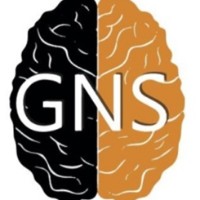Pain is a sensory and emotional experience mediated by distributed brain networks. Maladaptive functional changes in the so called “pain matrix” may participate in the chronification of pain. In particular, during chronic pain (CP), the representation of noxious stimuli shifts from the typical nociceptive circuits to the limbic system, involved in the affective and motivational assessment of pain.
Cortico-striatal (CS) neurons of the Anterior Cingulate Cortex (ACC) may play a key role in linking nociceptive and limbic systems during CP. The ACC is a main area of the pain matrix and is essential for the affective connotation of pain. Its projections to the medial striatum (MS) converge with other limbic inputs and the midbrain dopamine system. However, it is unknown how this neurons process nociceptive signals and how this is affected during CP.
To address this issue we used a mice model of neuropathic pain and recorded specifically CS-ACC neuronal activity in response to noxious stimuli in freely behaving animals. For that, we imaged neuronal calcium signals through a GRIN lens implanted over the ACC and a miniature microscope mounted on the head.
Our preliminary results show that a set of CS-ACC neurons were activated by nociceptive stimuli and that injured animals exhibited a differential pattern of affective behavioral responses to those stimuli. Further experiments will permit us to better understand the role of CS-ACC neurons on the affective expression of CP.
P#191
Nociceptive responses of cortico-striatal neurons of the Anterior Cingulate Cortex in an animal model of chronic pain
Constanza Ilarraz
- Ciudad Autónoma de Buenos Aires,
- Argentina
- Constanza Ilarraz ¹
- , Mario Acuña ²
- , Thomas Nevian ²
- , Fernando Kasanetz ¹
- 1 Grupo de Neurociencias de Sistemas, Instituto de Fisiología y Biofísica (IFIBIO) Houssay, CONICET, Universidad de Buenos Aires, Buenos Aires, Argentina
- 2 Department of Physiology, University of Bern, Switzerland

